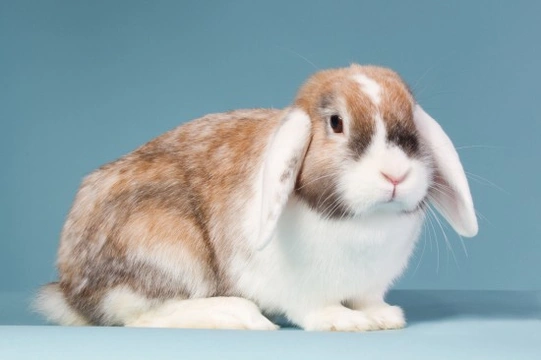
Septic Arthritis in Rabbits Explained
Rabbits just like people can suffer from arthritis which is a painful condition when joints become inflamed and swollen. However, there's a condition which is especially uncomfortable that rabbits suffer from which is septic arthritis and which develops due to a bacterial infection. The infection gets into one or several of a rabbit's joints and can affect them at any time in their lives. When it does develop, it can cause a bunny a tremendous amount of pain which is why early detection, diagnosis and treatment is so essential.
The Symptoms and Signs to Watch Out For
Rabbits with the condition tend to look very sorry for themselves preferring to be left alone and uninterested in their food or anything that's going on around them – even a favourite treat or two will not tempt them to eat so it's important to keep an eye out for any of the following symptoms and if you are worried, you need to make an appointment at the vet as soon as you can:
- Sluggish and slow behaviour
- Lameness
- Loss of condition and weight
- Loss of appetite
- Anorexia
- Swollen and painful joints
- Heat emanating from joints
- Loss of flexibility and decreased movement
- An infection – could be a urinary tract infection or some form of dental disease
The Causes of Septic Arthritis
Septic arthritis is caused by pyogenic bacteria of which there are very many. These include the following:
- Staphylococci
- Pasteurella
- Anaerobic bacteria which are capable of surviving without the need of oxygen
These are the bacteria that are responsible for an infection somewhere in a rabbit's body which can migrate to other parts of their body which includes their joints and this is where they can cause all of the problems associated with septic arthritis.
Rabbits That are the Most at Risk
Rabbits that have suffered a chronic (long-term) bacterial infection and bunnies that have experienced a traumatic injury or which have been diagnosed with immunosuppressive disorders are more at risk of developing the condition. However, other reasons why septic arthritis might take hold could be due to some form of dental disease, a wound somewhere on their bodies that becomes infected or an infection of their upper respiratory tract which sees the bacteria migrate into a rabbit's joints.
Diagnosing the Condition
It's really important for an early diagnosis to be made in order to reduce the amount of pain and suffering a bunny would have to put up with should they develop septic arthritis. Because rabbits that boast a history of dental disease or some sort of upper respiratory tract infection are more at risk it is therefore really important to keep a close eye on them just in case the infection does get into their joints.
The vet would need to carry out certain tests which would include drawing some synovial fluid from an infected joint which they would then send for analysis. This would help establish whether or not septic arthritis has taken hold because harmful bacteria would be present. A vet would also take X-rays of the joints and carry out a urinalysis to confirm their diagnosis.
Treating Septic Arthritis
Vets would need to treat the underlying cause of the condition before they would be able to cure septic arthritis itself. Generally, vets would prescribe a course of antibiotics which would fight off any bacteria and it's essential the course of antibiotics be completed for them to really work. However, just occasionally a rabbit with septic arthritis might have to undergo surgery.
Living and Managing a Rabbit with Septic Arthritis
It is possible to make life more comfortable for rabbits with the condition and this includes using softer bedding in their environment. Exercise and activity has to be restricted during the recovery period too. However, the most important thing is to ensure your pet is eating and to make sure they are given a well balanced and nutritious diet which has to include lots of fresh foods and top quality hay.
You may find that your rabbit needs to be on medication for a long time which the vet would have prescribed to aid their recovery. It's really important for all medication to be given just as the vet recommended. A course of antibiotics has to be completed for it to be really effective. You may also find that septic arthritis may have triggered a condition called residual degenerative joint disease. This is a chronic condition that affects the joints by causing them to deteriorate and as such is a long-term disorder that will need continuous veterinary treatment.
Preventing Septic Arthritis
Due to the fact there are many things that can cause septic arthritis, it would be impossible to list all the things you could do to prevent this painful condition from developing. With this said, keeping a pet rabbit as safe as possible and away from any places or situations where they may get injured, reduces the chances of an infection happening.
If your pet does suffer an injury, you need to make sure the cut or wound is kept as clean as possible to avoid an infection from taking hold. If you are unsure about which type of topical medication to use on a rabbit would, your vet would be able to recommend or prescribe a good antibacterial ointment which should keep an infection at bay.



